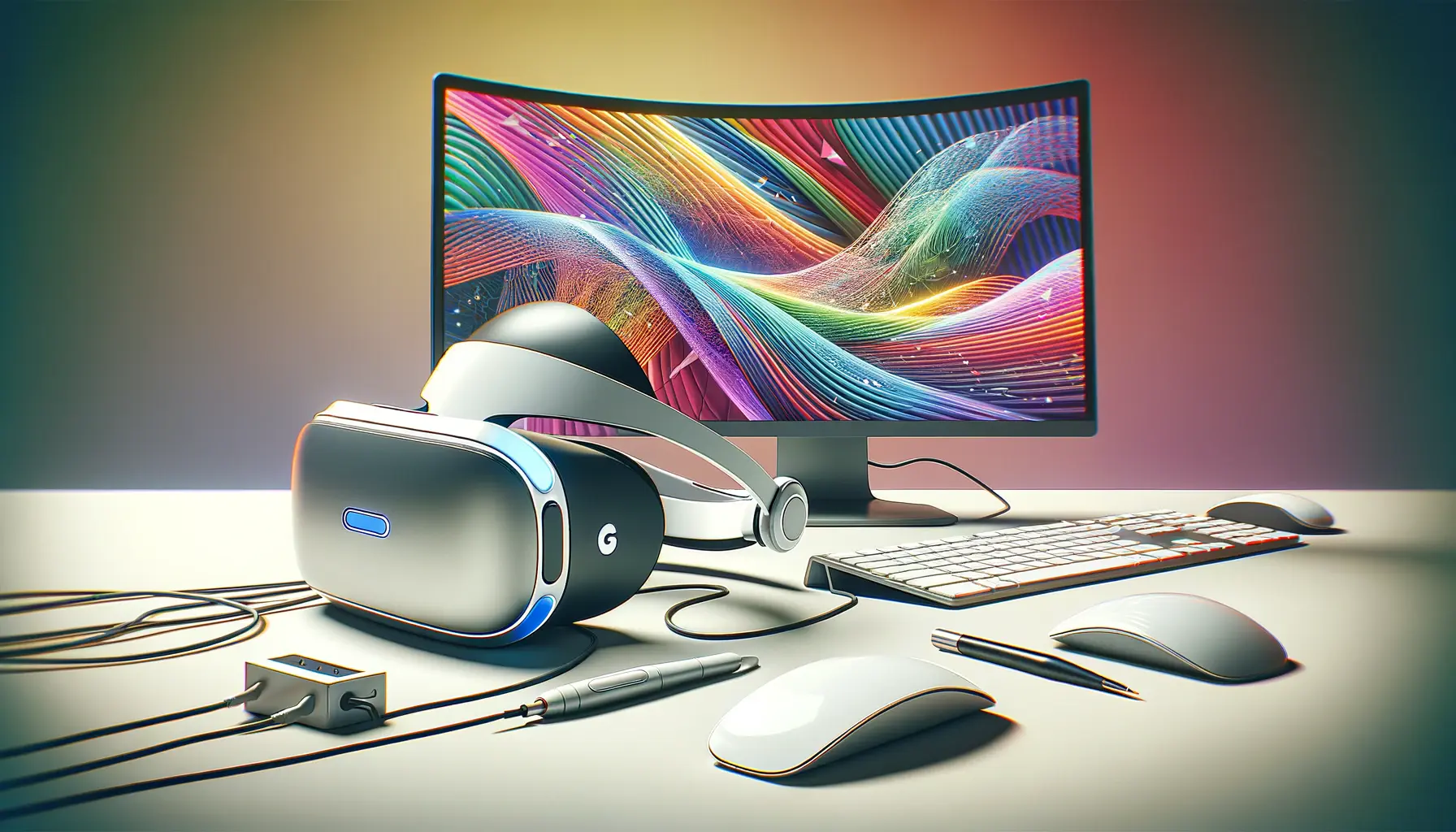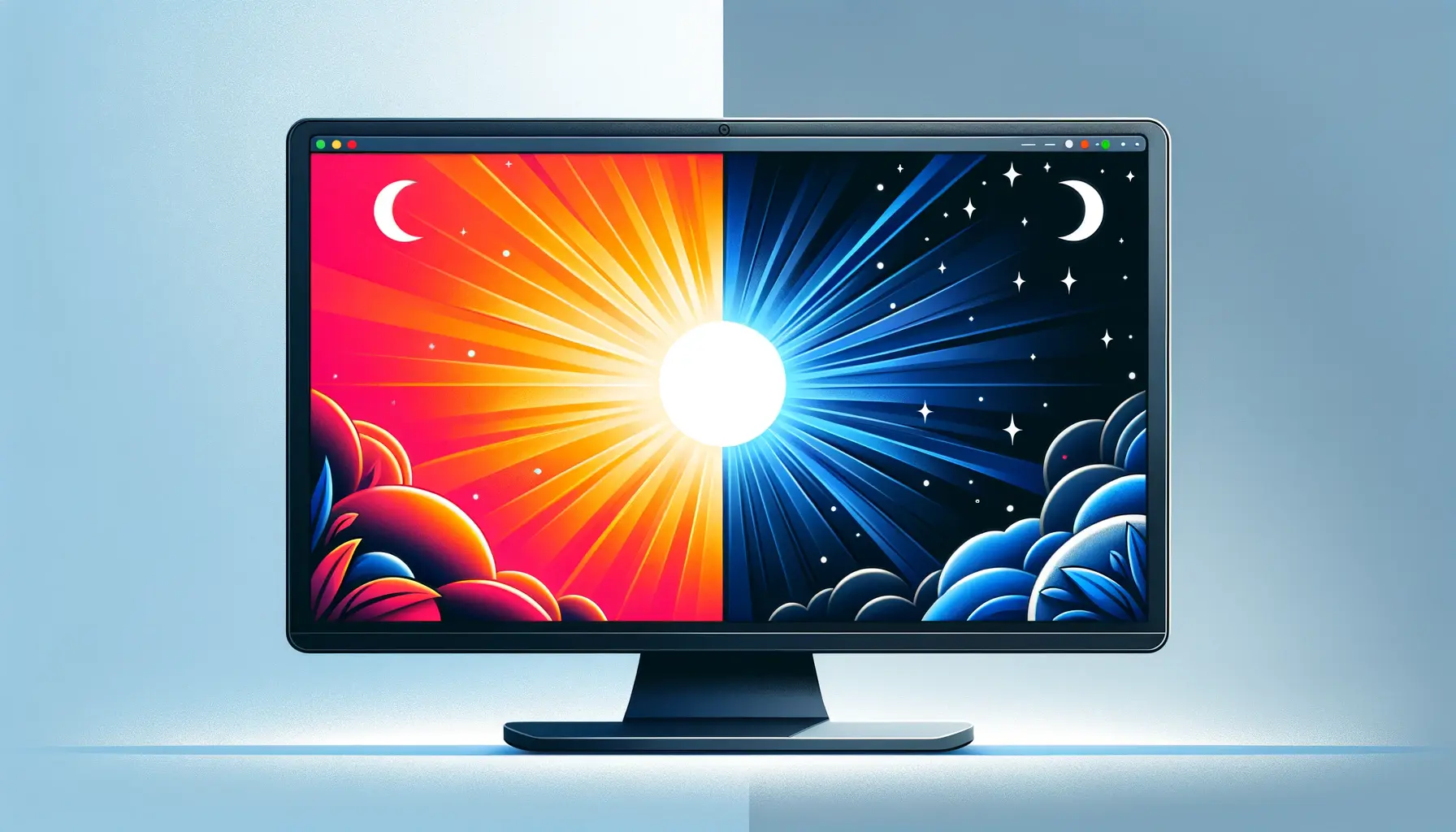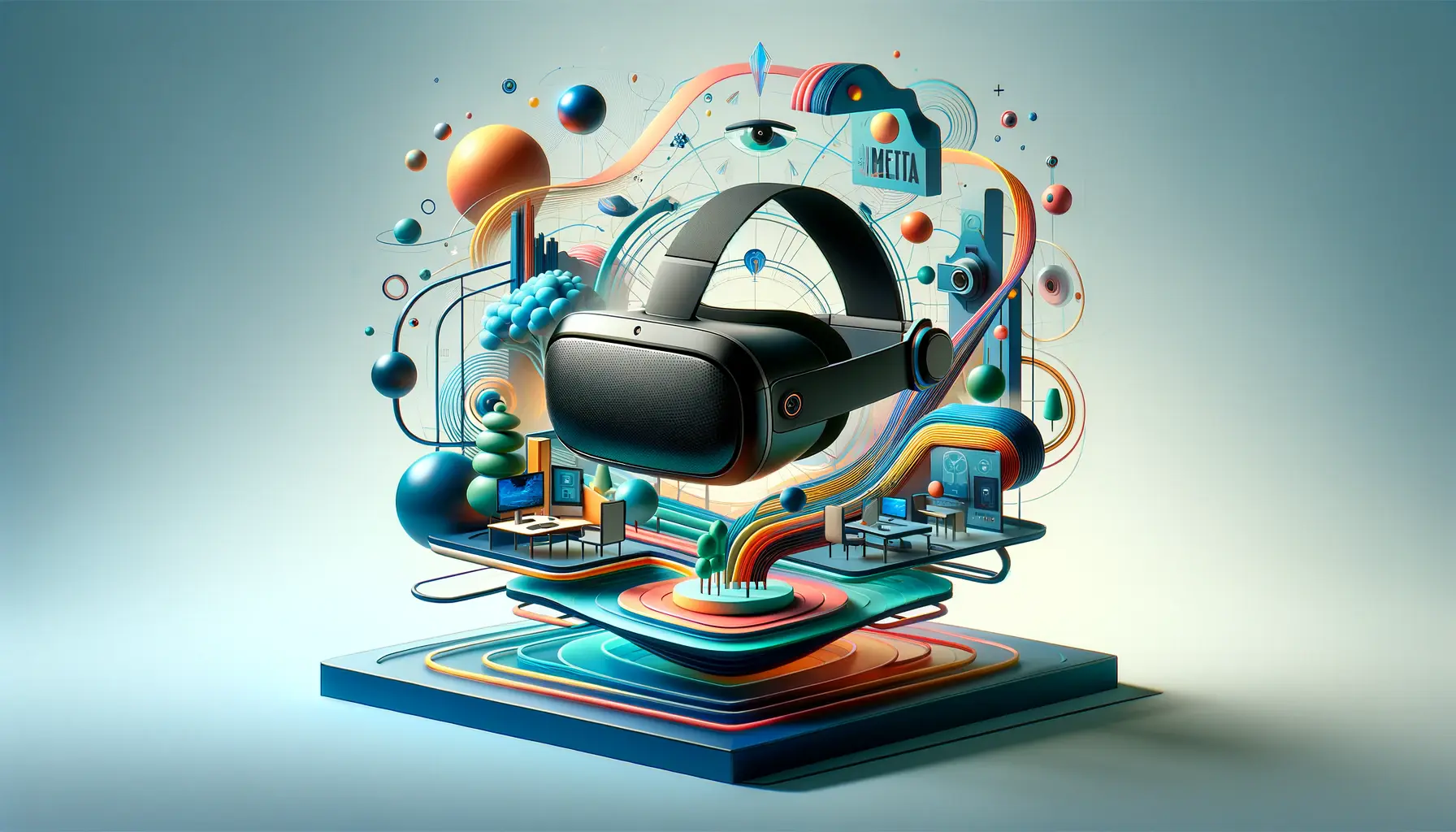The digital landscape is continuously evolving, with virtual reality (VR) emerging as a groundbreaking frontier in web experiences.
As developers and designers seek to create more immersive and engaging online environments, the role of Cascading Style Sheets (CSS) in crafting these virtual spaces has become increasingly significant.
This article delves into the intricate relationship between CSS and VR, exploring how the former can be leveraged to design compelling VR web experiences that captivate users and elevate the standard of interactive web design.
At its core, virtual reality aims to transport users into an entirely different world, one where the boundaries of physical and digital realms blur.
CSS, a language traditionally used for styling web pages, has found a new purpose in this endeavor.
By manipulating elements in three-dimensional space, CSS enables web developers to create environments that offer depth, movement, and a sense of immersion without the need for complex programming or specialized software.
This fusion of CSS and VR technologies not only democratizes the creation of virtual experiences but also opens up a realm of possibilities for web design and user interaction.
- Understanding CSS in the Context of VR
- Designing VR Experiences with CSS
- Optimizing Performance for CSS-driven VR
- Accessibility in CSS-driven VR Experiences
- Integrating CSS with WebVR and WebXR
- Future Trends in CSS and VR
- Best Practices for Developing CSS-driven VR
- Embracing the Future of Web Experiences with CSS and Virtual Reality
- CSS and Virtual Reality Web Experiences FAQs
Understanding CSS in the Context of VR
The Basics of CSS for VR
The application of CSS in virtual reality web experiences is not about reinventing the wheel but rather extending its capabilities into the third dimension.
CSS3, with its advanced features such as 3D transforms, animations, and transitions, provides a robust foundation for creating basic VR scenes directly in the browser.
These features allow elements to move, rotate, and scale in three-dimensional space, offering a glimpse into the potential of CSS-driven VR experiences.
Moreover, the introduction of CSS variables and custom properties has opened up new avenues for dynamic styling and interactivity within VR environments.
Developers can now easily manipulate variables to adjust the VR scene based on user interactions or external data, making the virtual experience more responsive and engaging.
Challenges and Solutions
Despite its potential, using CSS for VR web experiences comes with its set of challenges.
One of the main hurdles is performance optimization.
VR experiences demand high frame rates and low latency to prevent motion sickness and ensure a smooth user experience.
CSS, primarily designed for styling static web pages, can struggle to meet these performance requirements when used for complex 3D animations and interactions.
To address these challenges, developers often combine CSS with other web technologies such as WebGL and WebXR.
These technologies are specifically designed for creating high-performance graphics and immersive experiences on the web.
By using CSS for styling and layout and relying on WebGL or WebXR for rendering 3D graphics, developers can create VR experiences that are both visually stunning and performant.
Combining CSS with WebGL or WebXR offers a balanced approach to creating immersive VR web experiences that are both visually appealing and optimized for performance.
Designing VR Experiences with CSS
Creating virtual reality experiences on the web requires a blend of creativity, technical skill, and an understanding of user interaction within three-dimensional spaces.
CSS, with its design-centric approach, plays a pivotal role in this creative process.
This section explores the practical aspects of designing VR environments using CSS, focusing on layout, animation, and user interaction.
The design process begins with conceptualizing the virtual space.
This involves defining the scene’s structure, objects, and the interactions that will take place within it.
CSS is instrumental in bringing this vision to life, allowing designers to specify the appearance and behavior of elements in a 3D space.
Layout and Structure
One of the first steps in designing a VR experience is establishing the layout and structure of the virtual environment.
CSS flexbox and grid systems offer a powerful and flexible way to create complex layouts that can adapt to the dynamic nature of VR spaces.
These CSS features enable developers to arrange elements in any direction and align them with precision, ensuring a coherent structure that users can navigate intuitively.
- Flexbox: Ideal for 1D layouts, allowing alignment of items on a single axis, either horizontally or vertically.
- Grid: Best suited for 2D layouts, providing a grid-based framework that supports complex spatial arrangements.
Animation and Interactivity
Animation plays a crucial role in making VR experiences feel alive and engaging.
CSS animations and transitions offer a simple yet powerful toolkit for creating movement within the virtual space.
From subtle transitions that indicate interaction to complex animations that guide the user’s journey, CSS can infuse the VR environment with dynamism and personality.
- Transitions: Smoothly change CSS properties over time, perfect for subtle effects like hover states or background changes.
- Animations: Define keyframes to create more complex sequences of movements, allowing elements to traverse the virtual space in a controlled manner.
User Interaction and Feedback
In VR, user interaction is not limited to clicks and keystrokes.
Gestures, gaze, and spatial navigation play a significant role in how users engage with the virtual environment.
CSS can enhance these interactions by providing visual feedback and cues that guide users through the VR experience.
For instance, changing the appearance of an object when looked at or interacted with can make the environment more intuitive and responsive.
- Cursor and Gaze: Use CSS to change the appearance of elements as they come into the user’s focus, enhancing navigability.
- Interactive Feedback: Employ CSS transitions to provide immediate feedback on user actions, such as selecting or moving objects.
Leveraging CSS for layout, animation, and interaction design is key to creating immersive and user-friendly VR web experiences.
Optimizing Performance for CSS-driven VR
Performance is a critical factor in the success of virtual reality experiences.
High-quality VR requires smooth, lag-free interaction to maintain immersion and prevent discomfort.
When using CSS for VR, optimizing performance becomes a challenge that developers must address to ensure a seamless user experience.
This section outlines strategies for enhancing the performance of CSS-driven VR web experiences.
Optimization involves a combination of efficient coding practices, strategic resource management, and leveraging browser capabilities to reduce the load on the system.
By focusing on these areas, developers can create VR experiences that are not only visually impressive but also performant.
Efficient Use of CSS Properties
Not all CSS properties are created equal when it comes to performance.
Some properties, like transforms and opacity, can be animated or changed with minimal impact on performance because they do not trigger layout changes or repaints.
Developers should prioritize these properties for animations and transitions in VR environments.
- Transforms: Use translate, rotate, and scale for moving elements in 3D space without causing layout recalculations.
- Opacity: Adjusting opacity levels for fade-in and fade-out effects is efficient and does not impact layout or painting.
Minimizing Repaints and Reflows
Reflows and repaints are resource-intensive operations that occur when elements are added, removed, or altered within the DOM.
In VR, where many elements might be interacting simultaneously, minimizing these operations is crucial.
Developers can achieve this by batching DOM changes, using virtual DOM techniques, or employing CSS containment properties to limit the scope of reflows and repaints.
- Batching DOM Updates: Group changes to the DOM and apply them simultaneously to reduce the number of reflows and repaints.
- CSS Containment: Use the
containproperty to isolate parts of the layout, preventing changes from affecting the entire page.
Leveraging Hardware Acceleration
Many modern browsers support hardware acceleration, which offloads certain rendering tasks to the GPU.
This can significantly improve the performance of CSS animations and transformations in VR.
By explicitly triggering hardware acceleration through CSS, developers can ensure smoother animations and a more responsive VR experience.
- 3D Transforms: Applying a 3D transform, even a minor one, can trigger hardware acceleration for smoother animations.
- Will-Change: The
will-changeproperty informs the browser of elements that will undergo changes, allowing it to optimize in advance.
Understanding and applying these optimization techniques is essential for developing high-performance CSS-driven VR web experiences.
Accessibility in CSS-driven VR Experiences
As virtual reality becomes more integrated into web experiences, ensuring accessibility is paramount.
VR should be inclusive, allowing users of all abilities to navigate and interact with virtual environments comfortably.
CSS-driven VR experiences pose unique challenges for accessibility, but with thoughtful design and implementation, developers can create inclusive virtual spaces.
This section explores key considerations and strategies for enhancing accessibility in CSS-driven VR web experiences.
Accessibility in VR encompasses a range of considerations, from visual and auditory accommodations to interaction and navigational aids.
By addressing these areas, developers can ensure their VR experiences are more accessible to a diverse audience.
Visual Accommodations
Visual accessibility is crucial in VR, where users rely heavily on visual cues.
Developers can use CSS to adjust colors, contrasts, and font sizes, making content more readable for users with visual impairments.
Additionally, providing alternatives to purely visual cues, such as text descriptions or auditory signals, can help ensure that all users can navigate the VR environment effectively.
- Contrast Ratios: Ensure text and interactive elements stand out against their backgrounds, making them easier to see.
- Text Alternatives: Offer text descriptions for images and 3D objects, allowing screen readers to convey their purpose.
Auditory Accommodations
For users with hearing impairments, VR experiences must provide visual or tactile feedback in place of auditory cues.
CSS can be used to create visual alerts or indicators that mimic the information conveyed through sound, ensuring that all users can receive important feedback and alerts.
- Visual Alerts: Use CSS animations or transitions to signal alerts or actions that would typically have an auditory cue.
- Captioning: When videos or audio tracks are part of the VR experience, provide captions or subtitles to convey the information visually.
Interactive and Navigational Aids
Navigating a VR environment can be challenging for users with mobility or cognitive impairments.
To enhance accessibility, developers can implement keyboard navigation, voice commands, or simplified control schemes.
CSS can support these features by styling interactive elements to be easily identifiable and ensuring that focus indicators are clear and visible.
- Keyboard Navigation: Ensure that all interactive elements are accessible via keyboard controls, with visible focus styles for elements in focus.
- Voice Commands: For users unable to use traditional input devices, voice command functionality can offer an alternative way to interact with the VR environment.
Incorporating accessibility features into CSS-driven VR experiences not only broadens their appeal but also ensures compliance with web accessibility standards.
Integrating CSS with WebVR and WebXR
The evolution of web technologies has brought about the WebVR and WebXR APIs, designed to make virtual and augmented reality experiences more accessible on the web.
While CSS provides the styling and layout for VR environments, integrating it with WebVR and WebXR can unlock the full potential of immersive web experiences.
This section explores how CSS can be harmoniously combined with these APIs to create seamless and interactive VR experiences.
WebVR and WebXR offer a framework for developers to access VR and AR capabilities directly from the browser, without the need for external software or plugins.
CSS, with its design capabilities, complements these APIs by enhancing the visual appeal and user interface of VR experiences.
Enhancing UI with CSS
The user interface (UI) is a critical component of any VR experience, providing the means for users to interact with the virtual world.
CSS plays a vital role in designing UI elements that are both aesthetically pleasing and functional.
By integrating CSS with WebVR and WebXR, developers can create custom menus, buttons, and interactive elements that fit seamlessly into the VR environment.
- Custom Styling: Use CSS to design unique UI elements that match the theme and style of the VR experience.
- Responsive Design: Ensure UI elements are adaptable to different devices and screen sizes, enhancing the accessibility of VR experiences.
Creating Immersive Environments
Beyond UI elements, CSS can be used to style the overall environment of a VR experience, contributing to its immersion and realism.
Backgrounds, textures, and lighting effects created with CSS can add depth and atmosphere to virtual spaces, making them more engaging for users.
- Atmospheric Effects: Utilize CSS filters and gradients to simulate environmental effects like fog, lighting, or water.
- Texturing: Apply CSS patterns and images to give surfaces within the VR environment a more realistic appearance.
Interoperability Between CSS, WebVR, and WebXR
The key to successfully integrating CSS with WebVR and WebXR lies in understanding the strengths and limitations of each technology.
While CSS excels at styling and layout, WebVR and WebXR provide the framework for immersive interactions and environments.
Developers must ensure that CSS enhancements complement the VR experience without compromising performance or usability.
- Performance Considerations: Balance the use of CSS for styling with the performance requirements of WebVR and WebXR applications.
- Compatibility: Test VR experiences across different devices and browsers to ensure consistent behavior and appearance.
The synergy between CSS, WebVR, and WebXR technologies enables the creation of immersive, interactive, and visually compelling virtual reality experiences on the web.
Future Trends in CSS and VR
The intersection of CSS and virtual reality is an area ripe with potential for innovation and growth.
As both technologies continue to evolve, new trends are emerging that promise to further enhance the capabilities and accessibility of VR web experiences.
This section explores some of the future trends in the integration of CSS and VR, highlighting how they could shape the development of immersive web experiences in the years to come.
Advancements in CSS specifications and browser technologies, along with the increasing sophistication of VR hardware, are paving the way for more complex and interactive VR experiences.
These future trends not only promise to expand the creative possibilities for developers but also to make VR more accessible and enjoyable for users.
Increased Integration of 3D CSS Properties
As CSS evolves, we can expect to see an expansion in the range and complexity of 3D properties, making it easier to create sophisticated VR environments directly within the browser.
This could include more intuitive methods for defining 3D spaces, improved animation capabilities, and enhanced support for interactive 3D objects.
Such advancements would allow developers to craft more detailed and dynamic VR experiences with less reliance on external libraries or frameworks.
- Enhanced 3D Transforms: New CSS properties could provide more control over 3D transformations, enabling more intricate and realistic animations.
- Interactive 3D Objects: Improved CSS interactions for 3D objects, allowing users to engage with the VR environment in more intuitive ways.
Adoption of VR in E-commerce and Education
VR technology, supported by CSS for styling and layout, is set to revolutionize sectors like e-commerce and education.
In e-commerce, VR can offer immersive shopping experiences, allowing customers to explore products in a virtual space.
For education, VR can facilitate interactive learning environments, making complex concepts easier to understand through visualization and interaction.
CSS will play a crucial role in designing these VR experiences, ensuring they are accessible, navigable, and visually appealing.
- Virtual Showrooms: CSS-styled VR environments where customers can explore and interact with products in a simulated space.
- Interactive Learning Platforms: VR educational experiences designed with CSS, offering immersive and interactive ways to learn.
Enhanced Accessibility and Inclusivity
Future developments in CSS and VR are likely to place a stronger emphasis on accessibility and inclusivity, ensuring that VR experiences can be enjoyed by users of all abilities.
This could involve the introduction of new CSS properties and guidelines focused on making VR environments more navigable and understandable for users with disabilities.
By prioritizing accessibility, the future of CSS-driven VR will be one where immersive experiences are available to a broader audience.
- Accessible Navigation: Innovations in CSS that make navigating VR environments more intuitive for users with mobility or visual impairments.
- Inclusive Design Practices: Guidelines and properties that encourage the creation of VR experiences that cater to a wide range of users.
The future of CSS and VR holds exciting possibilities for creating more immersive, interactive, and inclusive web experiences, driven by advancements in technology and design.
Best Practices for Developing CSS-driven VR
Developing virtual reality experiences that are both immersive and performant requires adherence to a set of best practices.
These guidelines ensure that VR environments are accessible, engaging, and optimized for a wide range of devices.
This final section outlines essential best practices for developers looking to create CSS-driven VR web experiences.
By following these practices, developers can enhance the quality and user satisfaction of their VR projects, making them more enjoyable and accessible to a broader audience.
Focus on User Experience
User experience (UX) is paramount in VR.
Developers should prioritize intuitive navigation, clear instructions, and responsive interactions.
CSS can be used to style interactive elements for better visibility and to provide feedback on user actions, ensuring a seamless and enjoyable experience.
- Intuitive Navigation: Design VR environments with clear paths and cues, making it easy for users to explore without confusion.
- Responsive Feedback: Use CSS effects to give immediate visual feedback on interactions, enhancing the sense of immersion.
Optimize for Performance
Performance optimization is crucial for maintaining immersion in VR.
Developers should leverage CSS properties that are less taxing on the browser, minimize the use of resource-intensive animations, and consider the impact of their design choices on frame rates and loading times.
- Efficient CSS: Utilize performant CSS properties and avoid excessive use of complex animations and transitions.
- Load Management: Implement lazy loading for assets and optimize images and textures to reduce initial load times.
Ensure Accessibility
Accessibility should be a core consideration in the development of VR experiences.
This includes providing alternative navigation methods, ensuring content is perceivable for users with visual impairments, and using semantic HTML alongside CSS for better screen reader support.
- Alternative Controls: Offer keyboard and voice command options for users unable to use traditional VR controls.
- Visual Aids: Design with high contrast and provide text descriptions for images and 3D objects to aid users with visual impairments.
Test Across Devices and Browsers
VR experiences can vary significantly across different devices and browsers.
Developers should conduct thorough testing to ensure their VR environments are consistent and performant, regardless of the user’s platform.
This includes testing on various VR headsets, mobile devices, and desktop browsers to identify and address any compatibility issues.
- Compatibility Testing: Verify that VR experiences function correctly on a range of devices and browsers.
- Performance Benchmarking: Assess the performance of VR environments on different platforms to ensure smooth and responsive interactions.
Adhering to these best practices is essential for creating CSS-driven VR web experiences that are immersive, accessible, and enjoyable for all users.
Embracing the Future of Web Experiences with CSS and Virtual Reality
The integration of CSS with virtual reality represents a significant leap forward in the evolution of web experiences.
As we’ve explored throughout this article, CSS offers a versatile and powerful toolset for creating immersive, interactive VR environments directly within the browser.
This synergy between CSS and VR technologies not only enhances the visual and interactive capabilities of web experiences but also democratizes access to virtual reality, making it more accessible to developers and users alike.
The Path Forward
The future of CSS and virtual reality on the web is bright, with emerging trends and technologies promising to further expand the possibilities of what can be achieved.
As CSS continues to evolve, incorporating more sophisticated 3D properties and animations, the barrier to creating engaging VR experiences becomes increasingly surmountable.
This progression, coupled with advancements in WebVR and WebXR, sets the stage for a new era of web development where virtual experiences are as commonplace as traditional web pages.
Creating Inclusive and Accessible Virtual Spaces
One of the most compelling aspects of combining CSS with VR is the potential to create experiences that are inclusive and accessible to a wide audience.
The emphasis on accessibility and user experience ensures that VR web experiences can be enjoyed by users of all abilities, breaking down barriers and fostering a more inclusive digital world.
As developers, embracing these principles and incorporating best practices into our work is not just beneficial—it’s essential for the future of web experiences.
Conclusion
In conclusion, the fusion of CSS and virtual reality is more than just a technological innovation; it’s a gateway to new forms of expression, interaction, and engagement on the web.
By leveraging CSS to design and optimize VR experiences, developers can create virtual spaces that are not only visually stunning and interactive but also accessible and performant.
As we look to the future, the potential for CSS-driven VR web experiences is limited only by our imagination and willingness to explore the boundaries of what is possible.
The journey into the virtual realm is just beginning, and CSS is poised to play a pivotal role in shaping its trajectory.
Quality web design is key for a great website! Check out our service page to partner with an expert web design agency.
CSS and Virtual Reality Web Experiences FAQs
Explore common questions about integrating CSS with virtual reality for web experiences.
Building VR web experiences requires knowledge in HTML, CSS, JavaScript, and an understanding of VR principles.
VR on the web uses CSS for styling and layout, combined with WebVR/WebXR APIs for immersive experiences.
Basic VR scenes can be created with HTML and CSS, but JavaScript and WebVR/WebXR enhance interactivity and immersion.
WebXR is an API for VR and AR on the web, working alongside CSS to style immersive environments.
A-Frame is a popular framework that allows HTML-based VR development, easily styled with CSS.
CSS enhances VR by providing styling options for 3D objects, environments, and UI elements within virtual spaces.
Challenges include optimizing performance for 3D animations and ensuring compatibility across browsers and devices.
Accessibility is crucial, ensuring VR experiences are usable for people with diverse abilities, with CSS playing a key role in visual adjustments.











